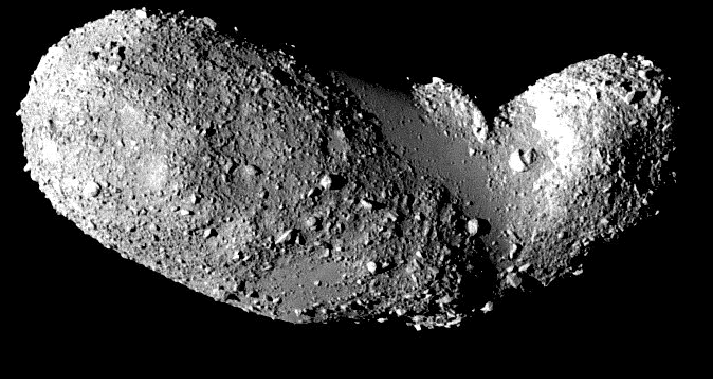
Enlarge / Itokawa, the original source of the dust grains examined in a new study. (credit: ISAS, JAXA)
About a decade ago, we were surprised to discover that there’s a fair amount of water on the surface of the Moon. Given that the Moon has no atmosphere and receives enough solar radiation to boil any water off, how that water got there wasn’t clear. One of the explanations offered up at the time was the solar wind that sends a steady stream of protons out in the the Solar System, and these could interact with lunar material to produce water.
Fast forward a decade, and we now have asteroid samples brought back to Earth by two different probes. Working with some of the material obtained by Japan’s Hayabusa mission, researchers have found a thin, water-rich layer is present there, too, consistent with being put in place by the solar wind. The researchers behind the finding suggest that this means that many Solar System bodies are likely to be fairly water-rich—a reservoir that could have made a big contribution to Earth’s oceans.
Only skin deep
The asteroid 25143 Itokawa was the target of the first successful sample-return mission to an asteroid. Itokawa is what’s called a “rubble pile,” made up of small fragments produced by collisions among asteroids, then slowly gathered together by gravity. Asteroids like this may have fragmented and re-formed multiple times over their history, and they could be composed of portions of more than one body.





